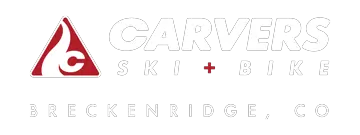Snowboarding is an exhilarating sport that demands strength, balance, and agility. Preparing your body through targeted exercises is crucial to make the most of your time on the slopes. In this guide, we’ll cover how to prepare for snowboarding, delve into a snowboard workout program, and highlight the top exercises for snowboarding to ensure you’re ready for the season. Additionally, if you’re also interested in maintaining your gear, don’t forget to check out our tips on bike repair to keep your equipment in top shape.
Why Do People Need Workouts for Snowboarding?
Preparing for snowboarding is essential for several reasons. First and foremost, snowboarding is a physically demanding sport that requires strength, balance, and agility. Proper workouts for snowboarding help to build the necessary muscle strength and endurance, reducing the risk of injury and ensuring you can handle the physical challenges of the slopes. Additionally, snowboarding often involves navigating various terrains and making quick adjustments, which requires good balance and coordination.
Preparing your body through targeted snowboarding workouts enhances these skills, allowing you to respond more effectively to environmental changes. Mental preparation is equally important; it helps boost confidence and reduces anxiety, which can enhance overall performance and enjoyment. By investing time in preparation, you not only improve your safety but also ensure a more enjoyable and successful snowboarding experience.
How to Prepare for Snowboarding?
Preparing for snowboarding isn’t just about getting your gear ready; it’s about ensuring that your body and mind are primed for the demands of the sport. So, how to train for snowboarding? Here’s a detailed guide to help you get fully prepared:
Assess Your Fitness Level
Understanding Your Starting Point: Before diving into a snowboard exercise plan, evaluate your current fitness level. This includes assessing your cardiovascular health, strength, flexibility, and balance. You can do this through simple fitness tests such as running a mile, performing a set number of squats or lunges, and checking your balance on one leg.
Set Realistic Goals: Based on your assessment, set achievable fitness goals. Whether it’s snowboarding leg workouts or enhancing core stability, having clear goals will help you stay motivated and track your progress.
Consult a Professional: If you’re unsure about how to get in shape for snowboarding, consider consulting a fitness trainer or physical therapist. They can provide a professional evaluation and tailor a workout program specifically for you.
Focus on Key Areas
Leg Strength: Snowboarding puts a lot of strain on your legs, particularly your quads, hamstrings, and calves. Incorporate exercises like squats, lunges, and step-ups into your routine. These snowboard exercises build strength and endurance in the muscles you’ll use most on the slopes.
Core Stability: A strong core is essential for maintaining balance and control while snowboarding. Include exercises such as planks, Russian twists, and bicycle crunches. These exercises target your abdominal muscles and lower back, providing the stability needed for effective maneuvering on your board.
Balance and Coordination: Good balance is crucial for snowboarding, as you’ll need to make quick adjustments while riding. Balance exercises, such as single-leg stand exercises for snowboarding, balance board training, and agility drills, will help you improve your coordination and stability. Incorporating these exercises will enhance your ability to respond to changes in terrain and maintain control.
Work on Flexibility
Dynamic Stretching: Start your workouts with dynamic stretching to prepare your muscles for exercise. Leg swings, hip circles, and arm swings increase blood flow and improve flexibility, helping you to perform movements more effectively.
Static Stretching: After completing workouts to prepare for snowboarding, focus on static stretches to maintain and improve your flexibility. Stretching exercises for your hamstrings, quadriceps, calves, and lower back are particularly beneficial. Hold each stretch for at least 30 seconds to ensure your muscles are lengthened and relaxed.
Foam Rolling: Incorporate foam rolling into your routine to alleviate muscle tightness and improve flexibility. Foam rolling helps release tension in your muscles and increase blood flow, aiding in recovery and reducing the risk of injury.
Mental Preparation
Visualization Techniques: Visualization is a powerful tool for mental preparation. Spend time imagining yourself successfully navigating various snowboarding scenarios. Picture yourself making smooth turns, handling challenging terrain, and executing tricks. These mental snowboarding exercises for beginners can enhance your confidence and improve your performance.
Relaxation and Stress Management: Snowboarding can be physically demanding and mentally challenging. Practice relaxation techniques such as deep breathing, meditation, or yoga to manage stress and stay focused. Being mentally relaxed will help you maintain concentration and make better decisions while snowboarding.
Setting a Positive Mindset: Approach your snowboarding preparation with a positive attitude. Set realistic expectations for yourself and celebrate your progress along the way. A positive mindset can boost your motivation and help you overcome any challenges you might face.
By focusing on these areas, you’ll know how to properly prepare for snowboarding. A comprehensive approach to conditioning and mental readiness will not only improve your performance but also enhance your overall enjoyment of the sport.
Try the Best Exercises for Snowboarding
To fully enjoy the thrill of snowboarding, it’s crucial to prepare your body for the physical demands of the sport. Snowboarding involves dynamic movements, shifts in balance, and rapid adjustments, all of which require a well-conditioned body. By focusing on specific exercises to prepare for snowboarding, you can improve strength, balance, and flexibility.
Strength exercises build the necessary muscle power and endurance needed to handle the stresses of snowboarding, from powerful turns to navigating rough terrain. Balance exercises enhance your ability to stay upright and control your board, while flexibility exercises help prevent injuries and improve your range of motion. Integrating these best exercises for snowboarding into your workout routine will ensure you’re in top shape and ready to make the most of every run.
Squats
Why They Matter: Squats build leg strength and endurance, mimicking the bending and powering movements required in snowboarding.
How to Do It: Stand with feet shoulder-width apart. Lower your body by bending your knees and hips, keeping your back straight. Return to standing. Add weights for extra intensity.
Lunges
Why They Matter: Lunges improve balance and strengthen the quads, hamstrings, and glutes. These good exercises for snowboarding are essential for stability and maneuverability on your board.
How to Do It: Step forward with one foot, lowering your body until both knees are bent at 90 degrees. Push off your front foot to return to the start. Alternate legs or try walking lunges for variety.
Planks
Why They Matter: Planks enhance core stability, crucial for maintaining balance and control on the board, making them a key component of strength training for snowboarding.
How to Do It: Hold a push-up position on your forearms, keeping your body in a straight line. Hold for 30-60 seconds. Incorporate side planks for a full-core workout.
Leg Raises
Why They Matter: Leg raises strengthen lower abdominal muscles, improving core stability and control.
How to Do It: Lie on your back with your legs extended. Lift your legs towards the ceiling and lower them slowly without touching the ground. Add weight for increased challenge.
Balance Exercises for Snowboarding
Why They Matter: Balance boards mimic the instability of snowboarding, enhancing your balance and coordination.
How to Do It: Stand on a balance board and shift your weight from side to side and front to back. Try holding positions or performing squats for added difficulty.
Single-Leg Squats
Why They Matter: Leg workouts for snowboarding build functional strength and improve balance, targeting muscles used in skiing.
How to Do It: Stand on one leg and lower your body by bending the standing leg’s knee. Return to standing. Repeat on both legs to balance strength.
Incorporating these best workouts for snowboarding into your routine will strengthen your body and improve your performance, ensuring a more enjoyable and successful time on the slopes.
Get Snowboard Workout Program and Rent From Carvers Ski+Bike!
As you gear up for your snowboarding adventures, remember that a well-rounded snowboard workout program is key to achieving peak performance on the slopes. For those looking to take their snowboarding experience to the next level, Carvers Ski+Bike offers the perfect solution. Locally and family-owned with 23 years of experience in the same location, we pride ourselves on providing top-notch service and expert advice. We carry the best brands in the industry, ensuring you have access to high-quality equipment for your snowboarding needs.
Whether you’re looking for a comprehensive snowboard workout plan to get in shape or need to rent the latest snowboard gear, Carvers Ski+Bike is here to support your snowboarding journey with excellence and expertise.

